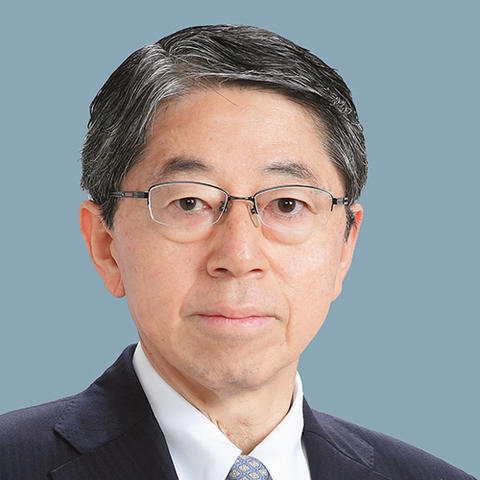Carbon capture: One technology for many routes to net-zero

Despite the impressive growth of renewable energy sources in Europe, they will not single-handedly get us to net-zero carbon emissions by 2050.
There are many approaches that the continent will need to embrace to realise this ambition: hydrogen, sustainable bioenergy and various ways of reducing and reusing the energy consumed in our homes, offices and factories will all be vital. As will carbon capture and storage (CCS).
CCS technologies available today can absorb upwards of more than 90% of carbon dioxide emissions generated by fossil-fuelled power stations and industrial plants.
In its latest report on the technology, the International Energy Agency (IEA) declares that without CCS it will be impossible to achieve the ambition of the Paris Agreement.
However, unlike renewable energy, policy to develop CCS has had some stops and starts. To decarbonise areas of the economy that cannot be simply electrified, there needs to be a coordinated effort to rapidly scale CCS or CCUS (carbon capture, utilization and Storage) markets.
A route to redemption
The area in which CCS shows most promise in helping Europe reach net-zero emissions is in decarbonising heavy industries and long-distance transport. Industries like iron, steel and chemical manufacturing rely heavily on fossil fuel-generated industrial heat, or use coal and gas as feedstocks. Some will ultimately move to hydrogen. However, for the likes of the cement industry, CCS is virtually the only route to significant emission cuts.
Not only can CCS take carbon out of the emissions generated by cement making, but it can then be put to work afterwards. For example, it can be injected into concrete (which mainly consists of cement) to reinforce it while also creating a permanent CO2 repository.
Another application is the production of synthetic fuels. Mitsubishi Heavy Industries (MHI) Group has already demonstrated how captured carbon and renewable hydrogen can be used to synthesise methanol in several industrial settings. This could be another low-carbon option for fuelling long-distance transport such as aviation and shipping.
Carbon capture systems are also being trialled onboard ships and could help the shipping industry comply with regulations to halve its greenhouse gas (GHG) emissions by 2050.
Creating a market for hydrogen and bioenergy
The European Commission’s (EC) hydrogen strategy sets out another role for CCS. To build a market for hydrogen generated from renewable electricity, the EC will need to stimulate demand. But to ensure sufficient resources to meet that demand, Europe will first need to ramp up fossil-fuelled hydrogen production, combining it with CCS to keep carbon levels low.
Alongside this, there is a role for CCS to deliver negative emissions when coupled with bioenergy, actively and permanently removing CO2 emissions from the atmosphere. Bioenergy with carbon capture and storage (BECCS) applies CCS to power plants, which can generate stable, reliable and baseload power and heat from renewable resources like biomass. It can also be used as a way of removing CO2 emissions from waste-to-energy plants.
The IEA has pronounced BECCS the most mature of all carbon removal technologies in a recent report on the energy transition.
MHI Engineering is currently engaged in the testing with its BECCS pilot facility at Drax Power Station in the UK. This project is expected to enhance Drax’s technical understanding for delivering negative emissions at the UK’s largest renewable power generator.
Once BECCS is scaled up, Drax expects to achieve 16 million tonnes in negative emissions annually − a third of the negative emissions the UK needs to reach its 2050 net-zero goal.
BECCS projects are also underway in Sweden, Belgium and the Netherlands.

Developing a framework
CCS technology itself is ready, as are a number of utilisation technologies, but to realise the opportunity will take a consolidated effort to scale it up.
Norway is reviving its CCS efforts by funding a series of projects, including deploying CCS at a cement factory and a waste plant. An associated project plans to pipe the captured CO2 to the North Sea, where it will be stored permanently under the water.
Adding to the role of CCS in the European Commissions’ hydrogen strategy, further support will be offered through the EU Innovation Fund, which is dedicated to demonstrating innovative low-carbon technologies.
The EC has also recently announced funding for CO2 transport infrastructure through its Connecting Europe Facility. This will see the Netherlands and Belgium develop a carbon transport network across three key ports, leading to an offshore storage site.
A joint effort
The IEA report proposes four high-level priorities for governments and industry that would accelerate the progress of carbon capture over the next decade.
As well as direct support for ongoing projects through stimulus packages, there is a pressing need to stimulate investment in the technology.
This could take the shape of positive incentives such as direct capital grants, tax credits, operational subsidies and risk-sharing in projects − or disincentives like carbon pricing mechanisms.
Alongside this, governments need to drive the development of industrial hubs with shared CO2 infrastructure. One example of this is the North Sea CCU Hub at North Sea Port, an area stretching along the Belgian and Dutch coastlines. Alongside capturing carbon from participating companies, the hub will also synthesise chemicals and fuels such as methanol.
And while the IEA considers global CO2 storage resources sufficient to meet and exceed future demand, the onus will be on governments to identify and support CO2 storage in strategic locations, including a strong regulatory framework for storage and transport.
Finally, the need for funding innovation remains a priority. The IEA estimates that almost two-thirds of the cumulative emissions reductions required by 2070 depend on technologies at the prototype stage or, at best, in the demonstration phase.
But these priorities for national policymakers are not ones they should tackle in isolation. Enabling the rapid commercial deployment of - proven - CCS technology in the market will take a joint effort from policymakers, investors and industry, both across Europe and worldwide. The heavy lifting must become an international priority − and urgently.
Learn more about CCS solutions





